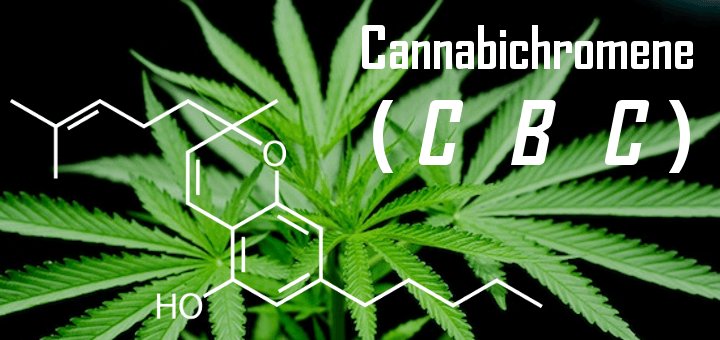Cannabichromene, or CBC, is one of the major cannabinoids found in cannabis. Studies have shown it safely and effectively provides a variety of therapeutic benefits, including improving pain, reducing inflammation, relieving depression and anxiety and inhibiting fungus growth.
Overview of CBC
Cannabichromene (CBC) is an often-overlooked cannabinoid found in cannabis. Despite being abundant in certain strains of cannabis, it’s the least studied of all major cannabinoids.
Findings: Effects of Cannabis on Effects of CBC
While CBC hasn’t demonstrated groundbreaking therapeutic benefits like THC or CBD, research shows that it does have analgesic, antidepressant, antimicrobial, anti-inflammatory, anti-proliferative, anti-anxiety, and bone and brain cell-stimulating effects that can assist in the treatment of a variety of conditions.
Pain Reliever
CBC has shown to be an analgesic agent, as when combined with CBD, it demonstrated effectiveness at reducing sensitivity to pain (Maione, et al., 2011).
Relieves Symptoms of Depression
CBC has shown to provide significant antidepressant-like effects when administered on its own, as well as when combined with THC (El-Alfy, et al., 2010). In addition, CBC has shown to encourage new brain cell birth, in turn helping prevent the decline of growth in these cells, which is thought to contribute to disorders like depression (Shinjyo & Di Marzo, 2013).
Inhibits Growth of Fungus
CBC has demonstrated “strong” antibacterial and antifungal effects, showing it can fight against bacteria like E. coli and staph (Turner & Elsohly, 1981).
Relieves Anxiety
CBC can reduce anxiety and stress levels. Cannabinoids, like CBC, interact with CB1 receptors of the endocannabinoid system, which in turn stimulate the release of natural chemicals that reduce the excitability of brain cells (Ramikie, et al, 2014).
Reduces Inflammation
CBC has demonstrated itself as an effective anti-inflammatory agent, suggesting it could assist with inflammatory-related conditions like arthritis or cardiovascular disease (Wirth, et al., 1980) (DeLong, Wolf, Poklis & Lichtman, 2010). In mice, it’s shown to reduce inflammation of the gastrointestinal system, suggesting that it may assist in the treatment of Crohn’s disease or other inflammatory bowel diseases (Izzo, et al., 2012). It has shown that it reduces inflammation, but without interacting with the cannabinoid receptors, suggesting that combining CBC with other cannabinoids that reduce inflammation through activation of the cannabinoid receptors could produce even greater anti-inflammatory effects (Izzo, et al., 2012).
Inhibits Cancer Growth
CBC has shown to help inhibit the uptake of anandamide, a human-produced endocannabinoid that has anti-cancer effects, which allows it to remain in the body’s system and work at reducing the body of cancer. Evidence shows that cannabinoids, like CBC, inhibits the growth of cancerous tumors in mice, suggesting they may be used as a cancer chemopreventive agent in the future (Nakajima, Nakae & Yasukawa, 2013).
RELATED ARTICLES:
Promotes Bone Growth
Cannabinoids, like CBC, have shown to be effective at activating human osteoclasts, thus increasing bone density and reducing the risk of bone health conditions like osteoporosis (Whyte, et al., 2012).
Promotes Growth of new Brain Cells
CBC has been shown to encourage neurogenesis (birth of new brain cells), an important process for memory and learning, and to increase the viability of developing brain cells. The decline of growth in these cells is thought to contribute to disorders like Alzheimer’s disease and depression (Shinjyo & Di Marzo, 2013).
References:
DeLong, G.T., Wolf, C.E., Poklis, A., and Lichtman, A.H. (2010, November 1). Pharmacological evaluation of the natural constituent of Cannabis sativa, cannabichromene and its modulation by (9)-tetrahydrocannabinol. Drug and Alcohol Dependence, 112(1-2), 126-33.
El-Alfy, A.T., Ivey, K., Robinson, K., Ahmed, S., Radwan, M., Slade, D., Khan, I., ElSohly, M., and Ross, S. (2010, June). Antidepressant-like effect of delta9-tetrahydrocannabinol and other cannabinoids isolated from Cannabis sativa L. Pharmacology, Biochemistry, and Behavior, 95(4), 434-42.
Izzo, A.A., Capasso, R., Aviello, G., Borrelli, F., Romano, B., Piscitelli, F., Gallo, L., Capasso, F., Orlando, P., and De Marzo, V. (2012, June). Inhibitory effect of cannabichromene, a major non-psychotropic cannabinoid extracted from Cannabis sativa, on inflammation-induced hypermotility in mice. British Journal of Pharmacology, 166(4), 1444-60.
Maione, S., Piscitelli, F., Gatta, L., Vita, D., De Petrocellis, L., Palazzo, E., de Novellis, V., and Di Marzo, V. (2011, February). Non-psychoactive cannabinoids modulate the descending pathway of antinociception in anaesthetized rats through several mechanisms of action. British Journal of Pharmacology, 162(3), 584-96.
Nakajima, J., Nakae, D., and Yasukawa, K. (2013, August). Structure-dependent inhibitory effects of synthetic cannabinoids against 12-O-tetradecanoylphorbol-13-acetate-induced inflammation and skin tumour promotion in mice. Journal of Pharmacy and Pharmacology, 65(8), 1223-1230.
Ramikie, T.S., Nyilas, R., Bluett, R.J., Gamble-George, J.C., Hartley, N.D., Mackie, K., Watanabe, M., Katona, I., and Patel, S. (2014, March 5). Multiple mechanistically distinct modes of endocannabinoid mobilation of central amygdala glutamatergic synapses. Neuron, 81(5), 1111-25.
Shinjyo, N., and Di Marzo, V. (2013, November). The effect of cannabichromene on adult neural stem/progenitor cells. Neurochemistry International, 63(5), 432-437.
Turner, C.D., and Elsohly, M.A. (1981, August-September). Biological activity of cannabichromene, its homologs and isomers. Journal of Clinical Pharmacology, 21 (8-9 Suppl), 238S-291S.
Whyte, L.S., Ford, L., Ridge, S.A., Cameron, G.A., Rogers, M.J., and Ross, R.A. (2012, April). Cannabinoids and bone: endocannabinoids modulate human osteoclast function in vitro. British Journal of Pharmacology. 165(8), 2584-97.
Wirth, P.W., Watson, E.S., ElSohly, M., Turner, C.E., and Murphy, J.C. (1980, June 9). Anti-inflammatory properties of cannabichromene. Life Sciences, 26(23), 1991-5.
*Article originally appeared at Minds.












